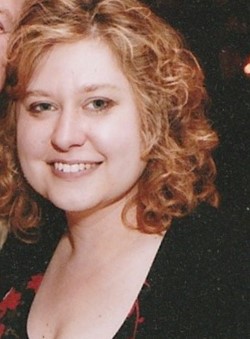
Differentiate Learning Using Multiple Intelligences
By Felicia Mizgorski
Neurodiversity in the classroom
It takes a special blend of grit and hope to be an educator. Our work evolves constantly. We seek out innovative practices that maximize the potential for every child. Incorporating instructional strategies using Neurodiversity can boost engagement and awaken motivation. By learning how to use Multiple Intelligences as a base for differentiated instruction, educators can inspire a love of learning that lasts a lifetime.
Multiple Intelligences
Multiple Intelligences are the work of Howard Gardner and are not new to education. While he was interested specifically in intelligence, there are many ways his research can be useful to teachers. Often our first exposure of Multiple Intelligences in college. We learn that they are different ways or strengths that people have to help them learn best. What we don’t learn is how to apply them to maximize the learning experience of our students. Engagement, Motivation, and Differentiation are fueled by our ability to connect with our students in meaningful ways. By altering how we present information and evaluate learning, we can increase our impact and ultimately improve learning for all diverse learners.
Differentiation as Ability Grouping
As it stands now, differentiation is a work in progress. A prevalent thought suggest ability grouping then targeting specific skills is the way to go. As a Curriculum Coach, I was asked to serve on a committee to define Differentiation. We had three days and were given a wide range of research samples to discuss and debate in our quest for an inclusive definition. The above mentioned perspective was one of them. Now, here’s the funny part: the committee was disbanded after two days. No solution could be reached. If you say “Differentiation” to an educator, it is the equivalent of two four letter words: MORE WORK. Giving every group different stuff, running between groups, it all becomes difficult to manage. It is exhausting just thinking about it! In my experience, this strategy has only limited success. It may work for some things, but not everything and I think it has an ethical cost.
I fear we limit students’ intellectual development and disregard the strengths of the child. We essentially reduced the child to a set of skills to be mastered in time for the almighty test. Perhaps more detrimental, we may even eroded the self-esteem of the child. After all, kids know when they are in the low group. So, according to ability grouping, the low group works on catch up skills. There is an argument that minimal rigor work was indeed rigorous for them. Maybe so or maybe not, we will never know because they are not exposed to anything more. Oh, that is, until the almighty test. There needs to be a better way to diversify learning.
Think Back To Your Experience
I am sure you can recall moments when instruction was in sync with how you learned best. I am also equally sure of the opposite.
I was a product of ability grouping. There were clever names for groups like the Cardinals, the Eagles and the Buzzards. I was a Buzzard in Reading back then. To save my life, I couldn’t hear nor understand phonics. Our teacher gave it her all with the Buzzards. Extra phonics instruction would surely help, even for children who just weren’t wired that way. I was bored and annoyed. Oh, and I hated reading. Here’s the interesting part: although phonics and spelling were not my gig, I had excellent comprehension. I was strange enough to take a trip to see the reading specialist. Turns out the compensation strategies I was using to overcome the deficit were making me a stronger reader. My mind just needed to come at it a different way. It just goes to show how a perceived weakness could be a unique strength that has yet to be identified. My learning diversity makes me unique and so does yours for you. To trade it for something else is to impugn the gifts we have been given. Additionally, shouldn’t we all have had the opportunity to receive instruction that made sense to our unique brain?
This brings me to special education. Talk to any parent of a special needs kid and they will tell you about some super-human ability their child possesses. “Learning Modalities,” I say when I hear that. Their child is graced with a generous supply of many kinds of intelligence. My point being, shouldn’t these children have an opportunity to respond to instruction in a way that makes sense to them? It is the educator’s responsibility to meet the needs of all diverse learners. That is what we do at The Center for Teacher Effectiveness. We provide strategies to improve the classroom experience for everyone. With that in mind, may I offer a more engaging definition for differentiation?
Differentiation is the art of providing students with multiple opportunities to respond to instruction.
From this perspective, everyone is exposed to grade level instruction. The instructional strategies chosen employ elements of many different learning modalities to appeal to different brains. Therefore, the students receive instruction in a way that is appealing to how they are wired. “However do you do that?” you may ask. We have sixteen strategies that provide students with multiple ways to receive and demonstrate their learning. Depth of knowledge is also considered utilizing a matrix of Bloom’s Taxonomy and Gardner’s Multiple Intelligences (or Marzano’s or Webb’s Depth of Knowledge). To help the educator select appropriate instructional strategies, we provide an extensive list of activities that are in sync with each of the Intelligences. Best of all, we teach educators how to put it all together for the benefit of diverse learners. It is a fun course and you’ll leave with Learning Modalities you didn’t know you had. Human beings don’t just have one Learning Modality, we have elements of many. Experiencing different delivery and response methods invigorates the brain, connects new synaptic pathways, and makes learning fun. Students are engaged. The novelty and customization may even tap into the elusiveness of motivation.
All the strategies taught at our one day training create Dynamic Tension that puts kids on the spot but does so in a controlled, positive way. Teaching individuals how to perform under pressure is usually reserved for the athletes or performers among us. We need it in education also. After all, high stakes testing comes around every year where performing on demand is expected. Teaching with strategies that promote positive feeling, attention and interest, connectedness and relevancy and self-efficacy become the vehicles for developing the cognitive flexibility necessary to tackle the test. It just makes good sense to teach this way.
Putting Theory into Practice
Now at this point I am sure you are just itching for an example. I would love to give one, sixteen in fact. Unfortunately, protecting intellectual property forbids me from giving away too much. I can offer this, think about a great story teller in your social circle. What makes them so captivating? They probably have included quite a few elements from Gardner’s Learning Intelligences. There is something of sight, sound, movement, and emotions to their story. The mix of different Learning Intelligences draws you in. That’s what makes it so captivating. There is a way for everyone to connect using what makes sense for them. You can see it also in your favorite comedian. Now imagine the application for education. Storytelling with these elements could make a fabulous review for a major history unit. I have used it to help students to learn the events leading up to the Revolutionary War in my fifth grade classroom. The students learn content though dramatic speech, movement, and emotions and respond with drawing of cartoons with captions. Using differentiated approaches to instruction allows the students to discover more ways to learn and different ways to think. At my full day training, I teach techniques that awaking multiple learning modalities and would love to share more information with you. Please contact me at feliciatrains.com for more information. You will be glad you did.

Felicia Mizgorski is a long time public school educator from Pittsburgh Pennsylvania. After twenty years of service teaching and curriculum coaching, she now helps fellow educators transform their classrooms. Felicia travels the United States as a National Trainer for the Center for Teacher Effectiveness facilitating courses in Classroom Management and Differentiated Instruction. For more about Felicia, visit: feliciatrains.com or look for her on LinkedIn. Click here for information about classroom management, and click here for information about differentiated instruction.




